
|
SUMMARY:
This article explains a clear, direct strategy designed to keep the customer at the center of your approach. To help spark your ideas for your brand’s most effective strategy, we combine real-world case studies and advice from your peers with methodology that MarketingSherpa’s parent company, MeclabsAI, discovered through years of experimentation. Use these steps to create a marketing strategy that resonates with your ideal customer and drives conversion. |
Action Box: AI workflow can help do this with you
MeclabsAI can do it with you. Try the multi-agent workflow How To Develop Your Customer-First Objective(CFO) Strategy (MeclabsAI is MarketingSherpa’s parent company).
A solid strategy begins with understanding the customer’s pain points. Find out exactly what issues your ideal customer faces by gathering real-world data.
Use interviews, surveys, and customer feedback to build an accurate picture. Document what your customers really need so you can build trust from the start.
"I love having a conversation with a customer. Customer conversations and stories to me are the bedrock of why I do what I do. And I learn nearly everything that we need to do on positioning from talking to customers, not from talking to the product teams,” Dave Anderson, vice president of product marketing, Contentsquare, told me in Customer Experience: Great experiences are invisible, but they require relentless alignment (podcast episode #145).
Also, dive into customer complaints about your current offering. As with our next example, you may find an underserved opportunity to launch a new product (or at least a new feature for your current product).
“From my past ventures, I’ve learned to ask: does this tool truly make the customer’s job easier or is it just shiny tech?” said Phil Portman, CEO, Textdrip. “Listen to where customers are hacking together solutions or complaining about workarounds. That’s usually where the real opportunities lie.”
For example, Portman had built and launched Argos Automation, focused on automating workflows for health insurance agents.
While the SaaS tool boosted agent productivity, customers consistently complained about ‘bad leads.’ After digging in, the team discovered the real customer problem was not the leads themselves but the communication platforms the agents were using. Text messaging produced the best results when it worked, but existing tools were buggy, difficult to use, and were often blocked or throttled by carriers.
That clear gap in the market led to the creation of Textdrip.
The team built a prototype and offered it to a group of Argos customers free of charge. They closely monitored deliverability rates, tracked response times, and gathered ongoing feedback. Over the next few months they iterated quickly, making adjustments based on real-world performance.
The beta users were outperforming their peers in the same offices by a wide margin. Soon other agents were asking to join, and testers offered to pay for the platform. Today, the SaaS company has $15 million in revenue.
“Looking ahead, the guiding principle remains the same: if it makes customers more productive, compliant, and profitable, it is worth building. That customer-first approach is what uncovered the original market gap, and it is what will drive our next wave of innovation,” Portman said.
Now that you understand how your ideal customer needs help, it’s time for a key step in Meclabs’ customer-first objective methodology – what you are going to do TO help your ideal customer? And how are you going to communicate it? (Flint McGlaughlin, CEO, MeclabsAI and MarketingSherpa, teaches Meclabs customer-first objective methodology in Customer-First Objectives: Discover a 3-part formula for focusing your webpage message).
When crafting your TO statement, clearly explain how your offer addresses customer problems. Describe exactly what your offer, product, or service does to solve the issues at hand.
Focus on measurable benefits such as cost savings, time reduction, and improved efficiency. Keep your message straightforward and free of technical jargon unless necessary.
And remember, you may not want to focus on the final conversion you are asking from your customer (likely the product or service sale). You could instead focus on an intermediate step that you use to build trust with the customer (an offer like a free webinar or AI tool), like in our next example.
“With 20 years of experience in marketing, I have used customer-first tactics as a primary marketing strategy to help solve customer needs and build trust and relationships when reaching out to the target audience of my wholesale and direct-to-consumer apparel business,” said Bryan Tomek, Founder, North Adams Company.
The team started by identifying its ideal customer as casual outdoor enthusiasts with a higher income and higher age bracket.
“We first tested this audience through our direct-to-consumer channel by running Facebook ad campaigns using a range of audiences and messaging that all fell within the assumed general guidelines, but with varying demographic details including different income levels and age ranges,” Tomek explained
Based on sales and traffic, they were able to clearly define their audience as outdoor enthusiasts with upper incomes ($85K+) in upper age ranges (35-60 years old).
Now that the ideal customer was defined, they set out to approach retail stores that had the same ideal customer. They pursued general outdoor activity shops, and avoided stores that focused on a single activity (like hiking or camping) since those stores did not often carry their type of apparel.
Once they had a list of outdoor stores, the team started calling on the stores to identify each store’s apparel buyers and collected email addresses in that phone call. “Although the list is small, about 300 at the moment, it is highly targeted, fully verified, and the audience has been primed with a phone discussion or voicemail,” he said.
Instead of sending emails directly selling its products, the team created a ‘Retailer Insights’ campaign with a TO customer-first objective – TO provide useful information relevant to the needs of apparel buyers. The content is developed around topics such as sustainable gear and apparel manufacturing, fabrics, style preferences, etc.
The emails feature the beginning of each article, and then recipients can click ‘READ MORE’ to see the full article on the North Adams website.
For example, the team sent an article titled ‘What Goes into Making Sustainable Outdoor Clothing and Equipment.’
Creative Sample: Email newsletter to retail store apparel buyers

In another example, the team sent an article titled ‘We All Love Heather Tees, But What Exactly is Heather?’
Creative Sample: Another email newsletter to retail store apparel buyers

Email open rates have slowly been rising, from 46% to 50%, which the team believes is an indication that this audience finds value in its emails. And after three emails, North Adams has received a wholesale order from a new store. “They are growing to trust us as a valuable resource of information that is relevant to serving their position and their audience,” Tomek said.
Now that you know what you want to do to help your ideal customer, how are you going to help them? Choose the best way to deliver those benefits to your customer. In the previous example, it was an email that linked to a helpful article.
Select a format(s) that resonates with your ideal customer. You could engage your customer with a free trial, a personalized strategy delivered by a custom AI, or a resource guide. Or it could be the product or service itself.
As with your marketing messaging, it’s a good idea to test different options. Develop multiple formats and test to see which one delivers the best engagement. A/B testing – or even unofficial sequential tests – help ensure that your chosen format leads to higher conversion rates.
In our next example, the team used AI to test creative pools on major social networks to determine the ideal BY for segmented groups of ideal customers.
An ecommerce company selling gaming peripherals was running static ads showcasing generic product bundles. The ads were served to all cart abandoners. Click-throughs averaged just 1.2%, with repeat impressions driving ad fatigue and customer frustration.
The team at Nerder wanted to make the ads more relevant to the ideal customer BY using AI-driven personalization. “We integrated AI-driven content sequencing into TikTok and Meta retargeting,” explained Cameron Prockiw, founder, Nerder.
Instead of blanketing audiences, the team dynamically mapped abandoned sessions to personalized creative for the ads. They plugged abandoned-cart session data into an AI-powered customer journey engine that clustered users by browsing depth, product interest, and hesitation signals.
The AI recognized micro-patterns – like repeated price comparisons or multiple returns to the shipping FAQ. Each pattern was tied to a creative pool: comparison videos, discount offers, or reassurance content. The AI wasn’t just sorting demographics but sequencing creatives in real time based on session fingerprints.
“Treat creative assets like Lego blocks. Build modular video snippets and let AI assemble them dynamically,” he recommended.
Some examples:
At first, the team over-segmented. Too many creative pools slowed delivery. Midway through they collapsed similar user behaviors into broader groups, which gave the AI cleaner data to optimize. This balance between personalization and scalability turned out to be pivotal.
Within six weeks, the ROI grew 2.8 times, and abandoned-cart recovery increased by 61%.
“Interestingly, we found TikTok’s algorithm responded faster than Meta when retargeting audiences using segmented creative pools,” he said. “TikTok outperformed Meta mainly in algorithmic agility. TikTok quickly tested new creative pools, rewarding authentic-feel videos, while Meta leaned on longer learning cycles before optimizing. TikTok CTRs rose faster, especially for UGC-driven comparisons, while Meta still dominated for final-stage checkout pushes.”
This approach also led to a reduction in repeat impressions. By feeding fresher creatives based on session type, frequency capping – a technique that limits how many times the same ad is shown to a user – became less aggressive, and ad fatigue dropped sharply. “This gave us a much healthier CPM efficiency across TikTok,” Prockiw said.
The win here was not producing more ads but letting the system pick the right sequence for each hesitation pattern.
You’ve been focused on the customer up to this step, now you get to rub your hands together in a sinister fashion and get greedy. Mwahahahaha!
I’m kidding, of course. But I wanted to emphasize this important point – it’s ok to ask for something from your customers. Being customer-first does not mean you’re running a charity. You’re still a for-profit business (or a nonprofit that needs the funds to keep it’s organization going). Of course you need something from the customer.
But the common problem in marketing is – many marketers and entrepreneurs start with this step. When you take the Meclabs Customer-First Objective approach, this step only comes after you understand how you are going to help the customer. That’s what makes it customer first.
However, it’s not customer only. So once you’ve served the customer, clearly indicate what you need from the customer in exchange FOR your help.
Make sure you are clear about the value exchange and the customer understands the action required of them – whether it’s making a purchase, signing up, or sharing feedback.
And make it as easy as possible for them to take that action by reducing friction. Ensure the exchange process is as simple and clear as possible. Removing unnecessary steps in the customer journey encourages action.
“We bought the most popular health, fitness, and weight loss products on ClickBank and published honest, genuine reviews,” said Danyon Togia, search optimization specialist, Expert SEO.
Togia previously ran a health-product review website called HealthVI that grew to 1,500 daily visitors. Out of the 100+ products they tested, about 95% were terrible – and they told people not to buy them.
When they advised against purchasing a product, it was usually because of one (or more) of these reasons – untruthful information, lack of actionable information, and/or the cost of the product.
Each review had the format:
Only once they built trust with the TO and BY did they introduce the FOR. At the end of those negative reviews, they invited readers to join the email list where Togia shared the fat loss strategies he personally used to lose 70 pounds. In that email sequence, they only recommended the small handful (around 5%) of products they considered to be genuinely high quality.
They did not have the email signup on the 5% of reviews that were positive since people would be helped by that product and did not need further information.
“By putting customer success first, we built trust and loyalty,” Togia said. The site averaged 20 new email signups per day and each post averaged 20 to 50 comments.
Readers would email them daily thanking them for being transparent, and the site grew from about $200/month to almost $1,000/week in a year. “The revenue we made was clean money with integrity. We knew we were doing the right thing,” he concluded.
He advised fellow marketers and entrepreneurs to “Put the customer first. It's the same with SEO – people are coming to you because they have a problem they can't solve themself. They need your expertise and knowledge to help them solve this problem and get what they want. If you really want to build long-term trust and connection with your customers WHILE making money, make ‘do what's best for them’ at the forefront of your business.”
The previous example is a pretty extreme version of a customer-first FOR. So I thought it would help if you also saw a simple, mild version as well.
The goal of any product or service is to get someone to pay money. However, sometimes throwing the FOR at them too early in the customer journey can backfire, and a simpler FOR can work better.
The team at PerformX went from having a public pricing page to a password-protected page. Only once they’ve communicated enough TO and BY in the customer journey, did they get to the ultimate FOR – the price.
This new approach actually decreased conversion. They were converting at 10.4% and are now converting at 4.18%.
But it has helped the team attract better clients that are more focused on the value the agency provides. “If we bring them in as a low-ticket item we may compromise our work by cutting corners and stressing our resources and still will not be able to communicate the value,” said Sherin Mathew, founder, PerformX Performance Marketing Exodos.
“The biggest shift isn’t operational – it’s philosophical. This is our strategy for building relationships and not billing relationships,” Mathew said.
Now that you’ve decided on your Customer-First Objective strategy, align every component of your go-to-market plan around it. How does your Customer-First Objective help clarify product decisions? Media buying decisions? Offer decisions? Art and copy choices?
Take another look at your value proposition. Does it directly address the customer needs you’ve identified?
Revisit the customer journey. Every step must prioritize the customer’s experience and expectations based on your Customer-First Objective.
For example, you might decide to take another look at how you interact with current and prospective customers. Your Customer-First Objective will be very helpful here, because putting the customer first is core to relationship and community building.
“You don't ‘build’ community, you ‘facilitate’ community,” Dr. Marcus Collins, Head of Strategy, Wieden+Kennedy New York, and Clinical Assistant Professor of Marketing, University of Michigan’s Ross School of Business, told me in episode #52 of the How I Made It In Marketing podcast.
Here’s an example Dr. Collins provided in that episode to explain how he learned this lesson:
“And the team decided, let's just cut this thing that we're building here and let's help those people connect. Let's just help those people realizing what they want to get done. And that became Beyonce's official fan club. And from there, I learned this is not about building communities, but facilitating community because communities probably already exist. It's about finding them, understanding the things that matter to them, understanding that what they value, understand their points of friction, and how might we use our resources to help remove said points of friction.”
I mentioned this in a previous step and gave an example, but testing and feedback are so vital to refining your strategy so this is worth its own step.
Implement A/B testing and any other type of testing you can. Test various headlines, calls to action, and page elements to determine what drives results.
Establish a quick feedback loop. Regularly update your strategy based on clear, measurable results. Real feedback helps keep your strategy relevant and effective over time.
Make sure your experiments have a clear hypothesis. The hypothesis could be about testing the TO element of your Customer-First Objective, and that would be the most obvious thing to test.
But the BY element is worth testing as well. For example, testing to remove friction. “We’ve analyzed over a thousand B2B websites and found that 96% still make buyers jump through hoops just to get basic information,” Omer Gotlieb, founder, Salespeak.ai said. “These friction points were built for internal control, not customer value. When you remove them, you’re not automating sales, you’re restoring trust.”
Even when testing the BY element, don’t get too caught up in the infrastructure of the change. That’s not really what you’re testing. Always focus on the impact the change has in the mind of the buyer.
“The biggest shift isn’t technological, it’s philosophical,” Gotlieb said. “Being customer-first now means designing your digital experience around what buyers actually need in the moment, not what’s convenient for your funnel.”
Documenting your approach provides a roadmap for ongoing success. Record the results of all your tests or iterations – keep detailed records of performance metrics and customer responses.
Based on that, plan future adjustments. After all, the world is always changing on a macro (the economy, new technologies) and micro (your customer ages, you get new competition) level. So a Customer-First Objective strategy that was hugely successful in 2019, for example, might no longer be serving the customer (and getting you business results) in 2025.
Use the data you collect to plan future iterations and improvements. Regular updates ensure your strategy stays tuned to changing customer needs and market trends.
Don’t just set this as an intention, make it part of your marketing and business planning, and even bake it into how you set your budget, like in this final example. Here’s what Julien Rio, Assistant Vice President, International Marketing, RingCentral, told me in Customer Experience: Take risks, fail early, and learn fast (podcast episode #32):
“80% of your budget, 80% of your focus, 80% of your activities should be our bread and butter.
You're going to have to focus on what's working, what's having an impact. Don't waste that money. We need to save it because we need the business to grow. Because so many startups die quickly after a round of funding, because they burn everything and there's nothing left. We need to be smarter about this. So 80% of everything you do is going to go to things that do work.
But then here comes the other 20%. And the other 20% I want you to get crazy with it. I want you to be creative. I want you to think out of the box. I want you to try many things and fail as many times as necessary until you find that golden nugget that you're going to be able to bring back to the 80% and keep growing it with the rest of your activities.”
Customer-First Objectives: Discover a 3-part formula for focusing your webpage message
Customer-First Marketing: Every click is a wish (podcast episode #85)
Business Intelligence: If only more of our customers were like Larry David
Get Better Business Results With a Skillfully Applied Customer-first Marketing Strategy

The customer-first approach of MarketingSherpa’s agency services can help you build the most effective strategy to serve customers and improve results, and then implement it across every customer touchpoint.
Get More Info >MECLABS AI
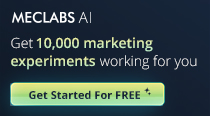
Get headlines, value prop, competitive analysis, and more.
Use the AI for FREE (for now) >Marketer Vs Machine
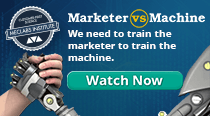
Marketer Vs Machine: We need to train the marketer to train the machine.
Watch Now >Live, Interactive Event

Join Flint McGlaughlin for Design Your Offer on May 22nd at 1 pm ET. You’ll learn proven strategies that drive real business results.
Get Your Scholarship >Free Marketing Course
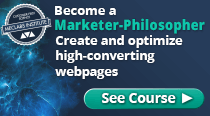
Become a Marketer-Philosopher: Create and optimize high-converting webpages (with this free online marketing course)
See Course >Project and Ideas Pitch Template
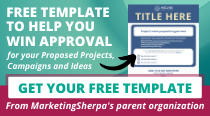
A free template to help you win approval for your proposed projects and campaigns
Get the Template >Six Quick CTA checklists
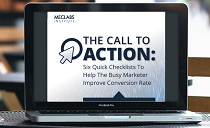
These CTA checklists are specifically designed for your team — something practical to hold up against your CTAs to help the time-pressed marketer quickly consider the customer psychology of your “asks” and how you can improve them.
Get the Checklists >Infographic: How to Create a Model of Your Customer’s Mind
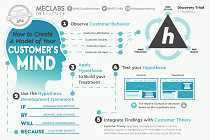
You need a repeatable methodology focused on building your organization’s customer wisdom throughout your campaigns and websites. This infographic can get you started.
Get the Infographic >Infographic: 21 Psychological Elements that Power Effective Web Design
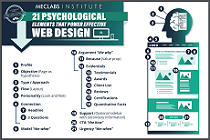
To build an effective page from scratch, you need to begin with the psychology of your customer. This infographic can get you started.
Get the Infographic >Receive the latest case studies and data on email, lead gen, and social media along with MarketingSherpa updates and promotions.